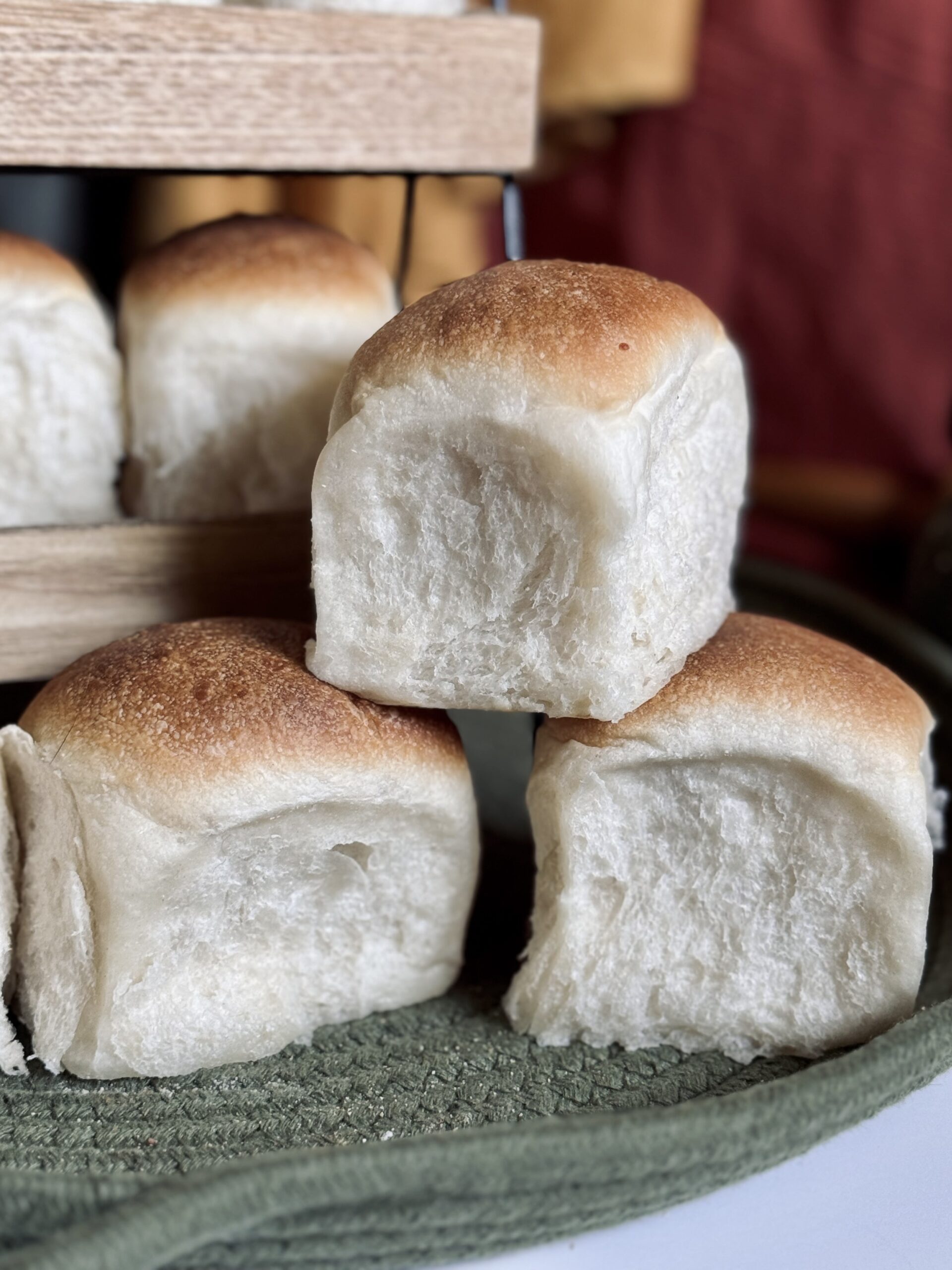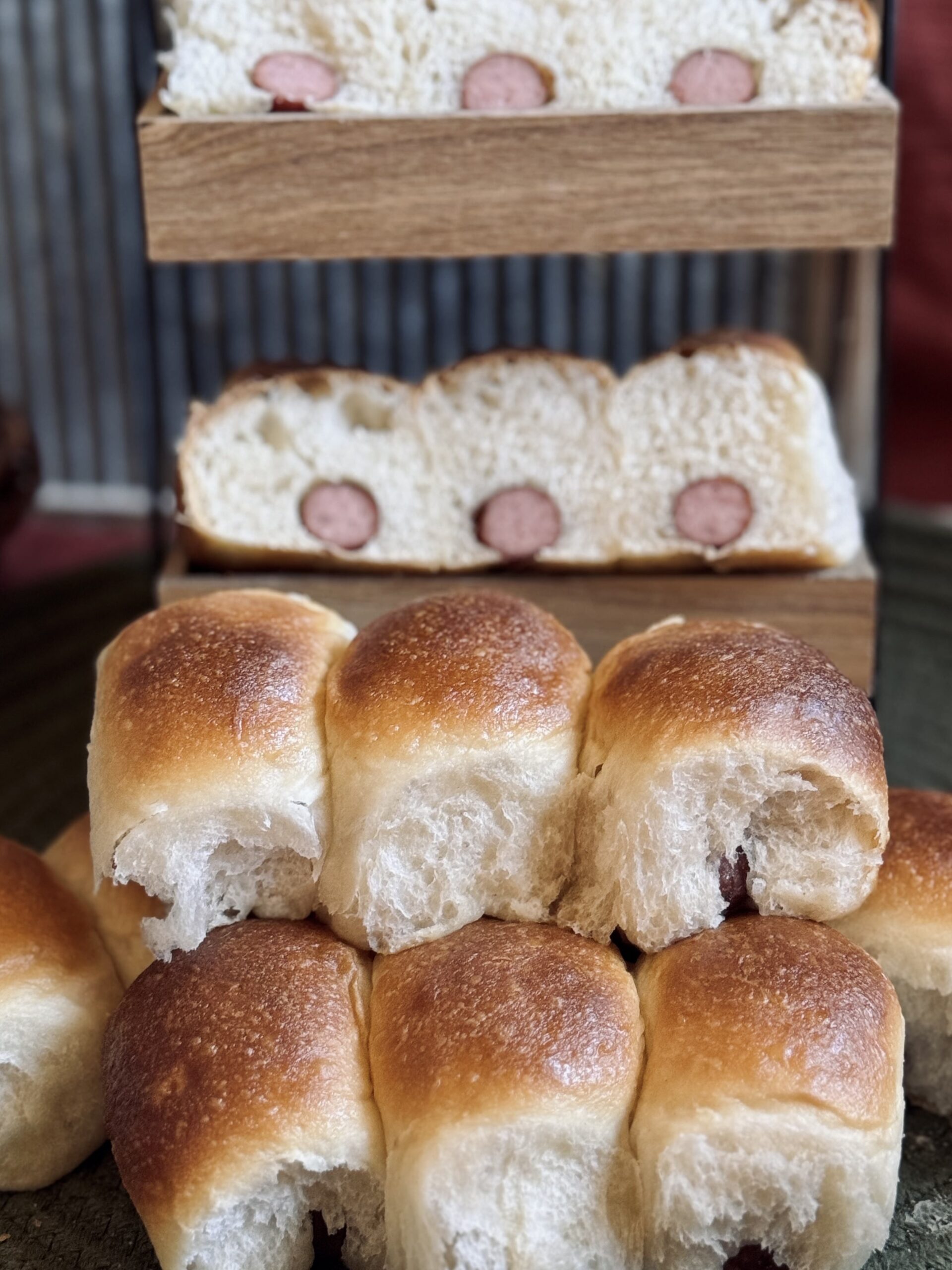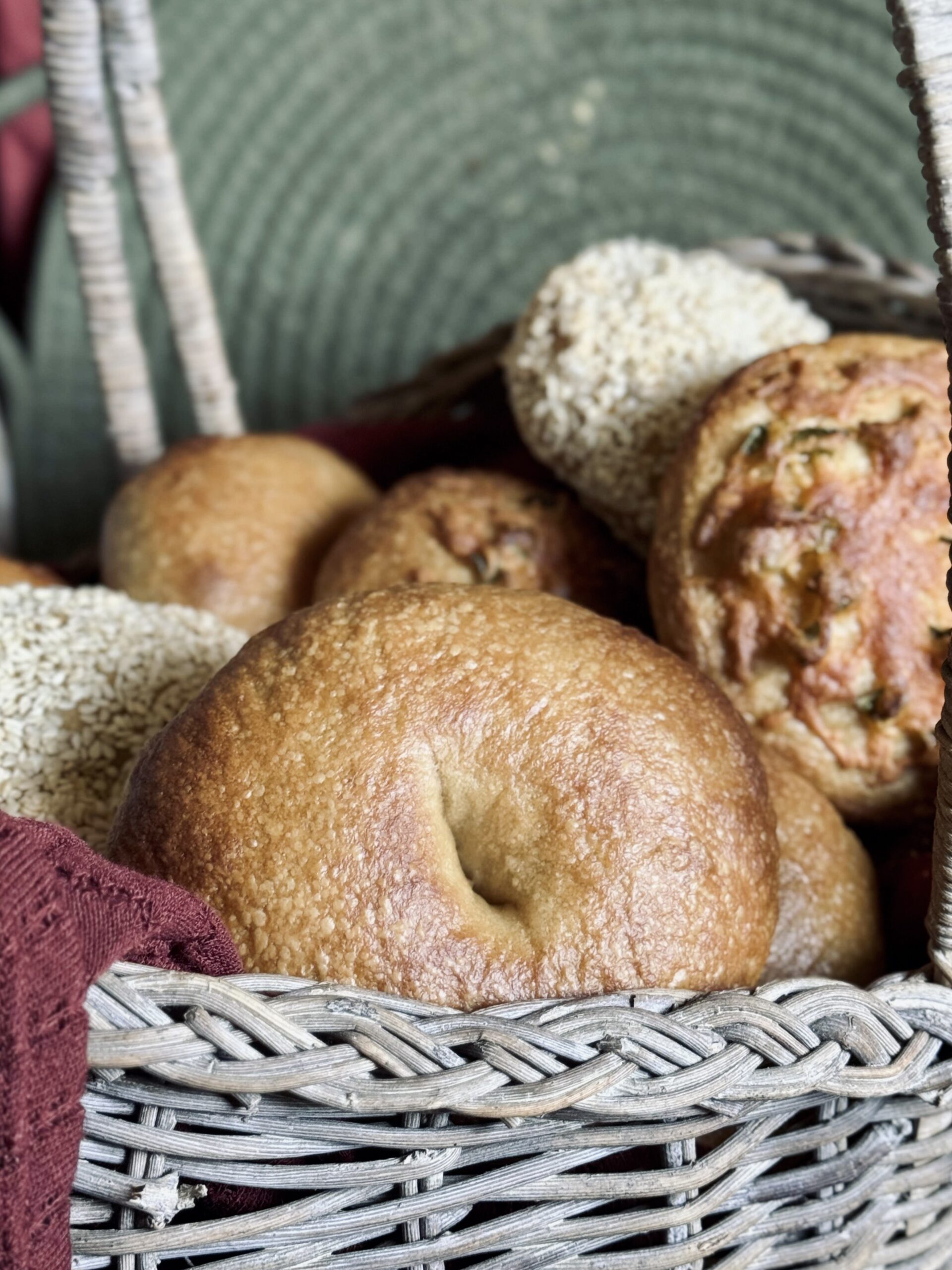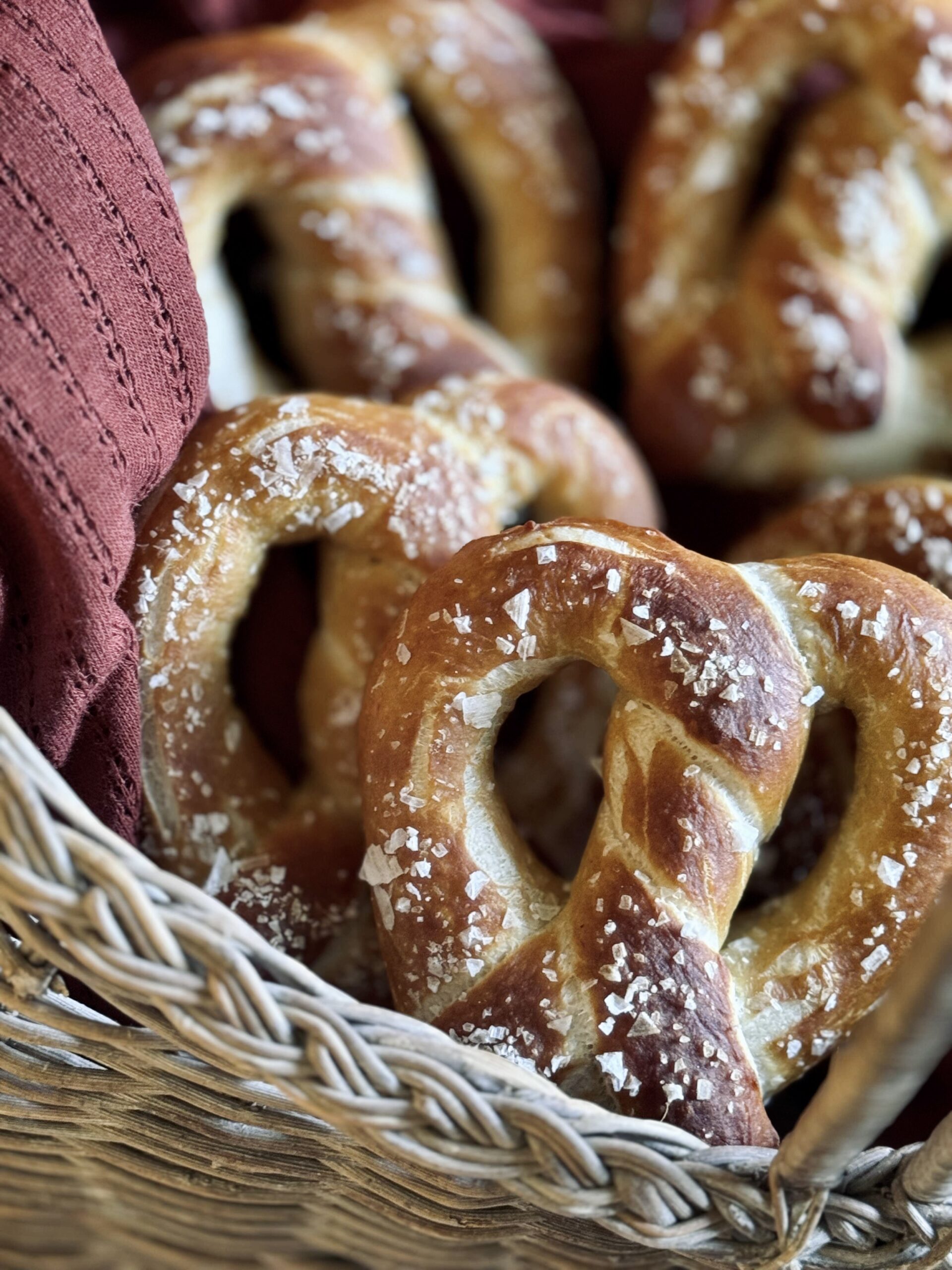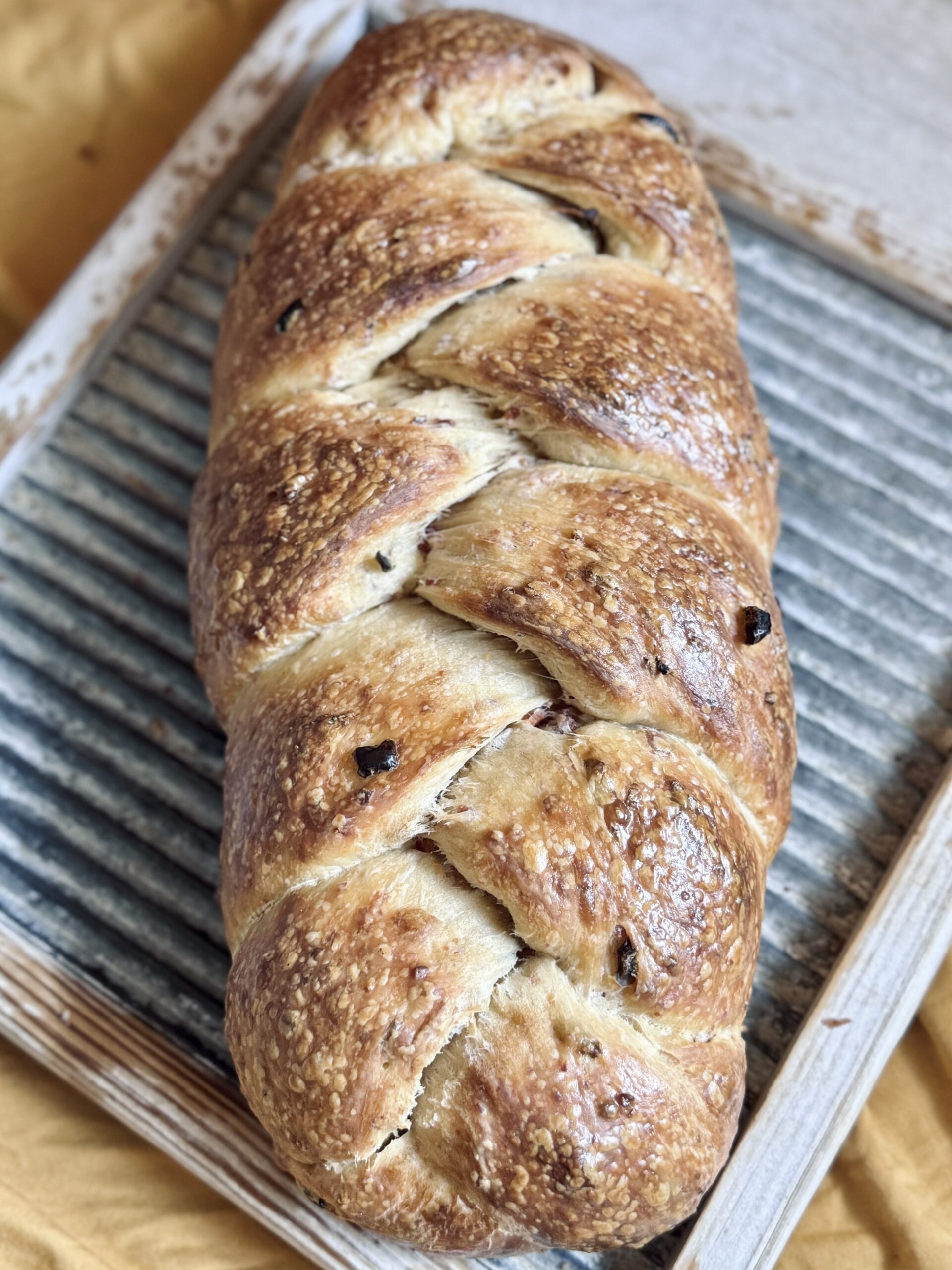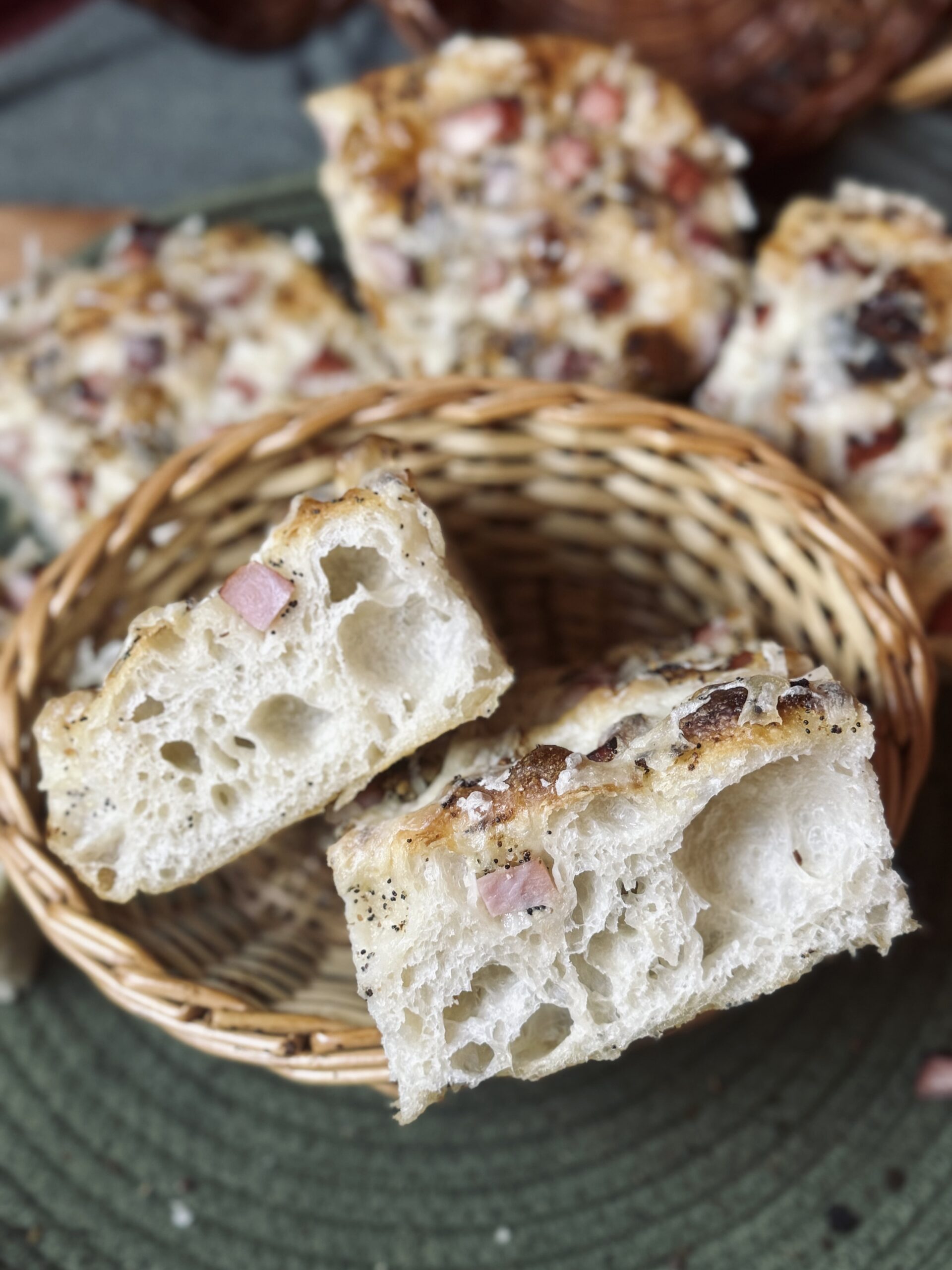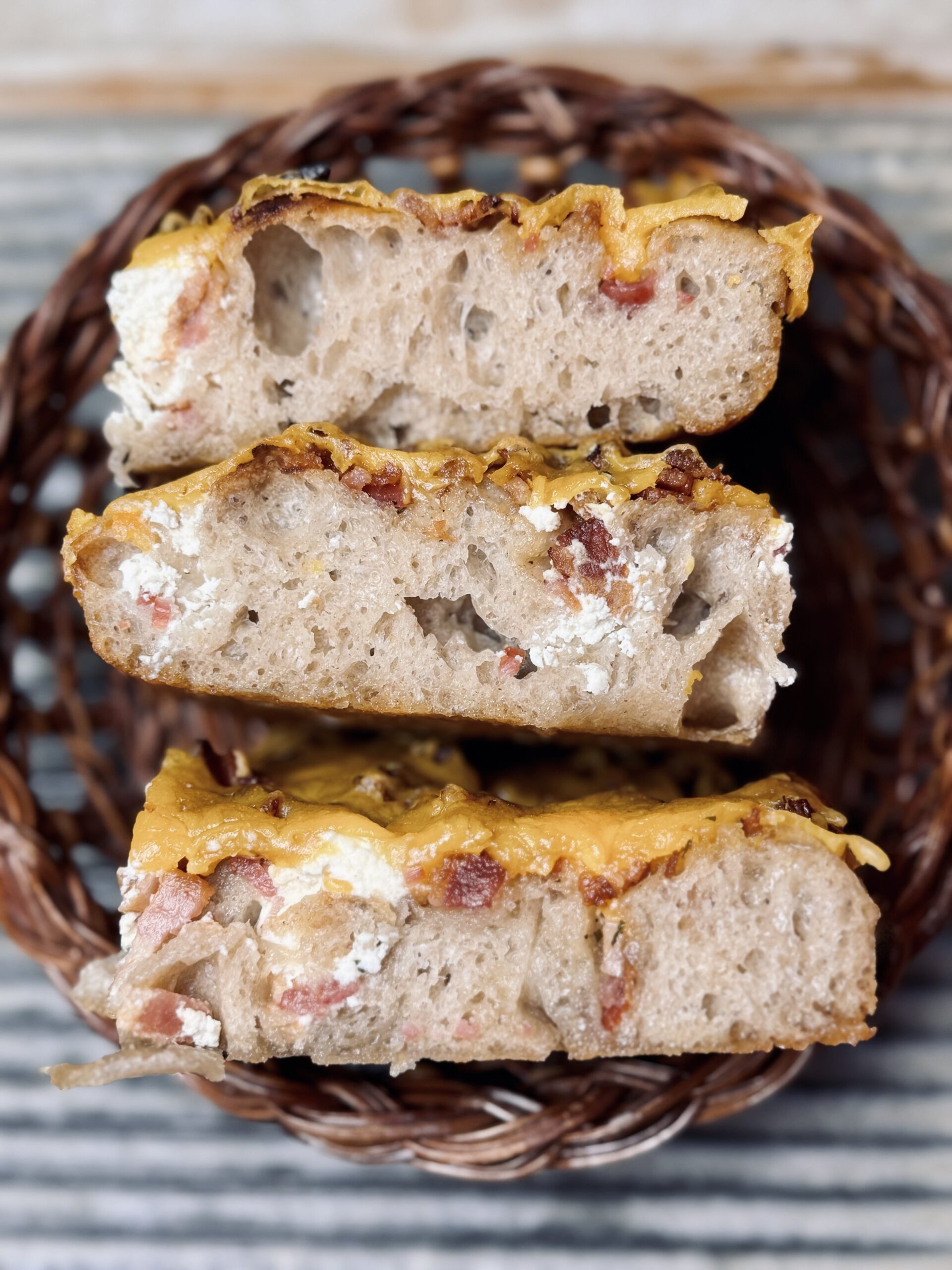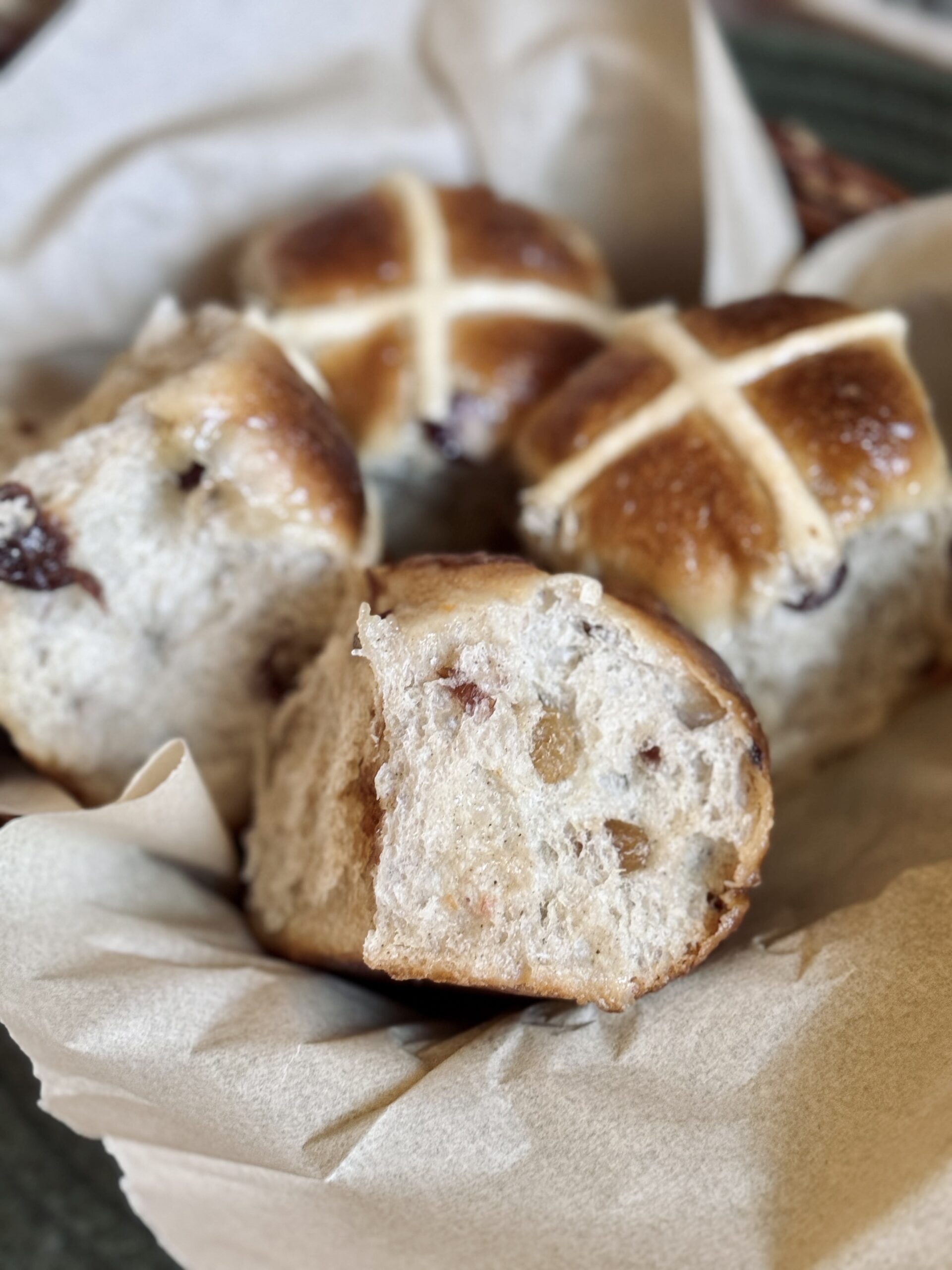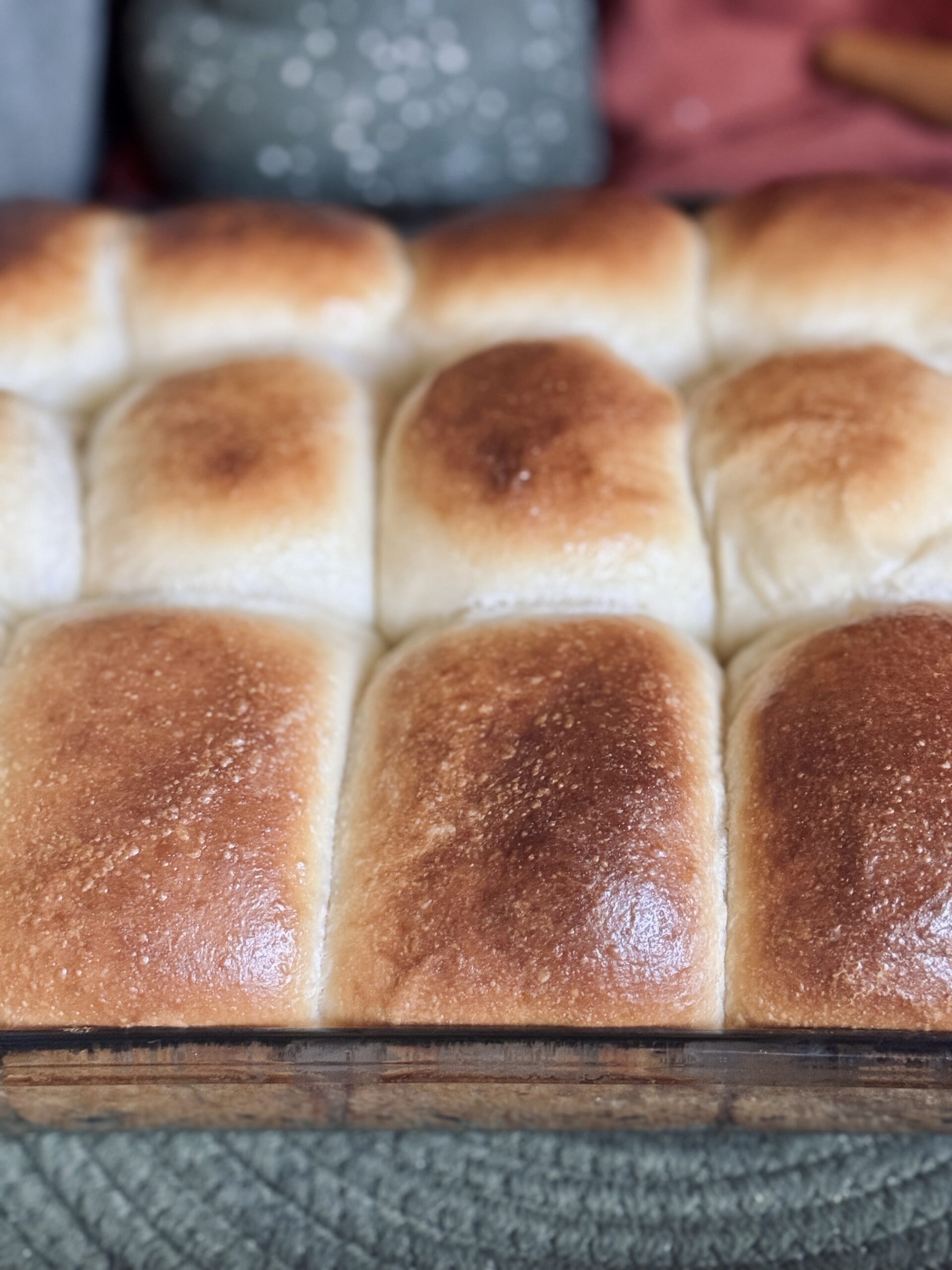About This Recipe
What do you get when you cross buttery brioche with milk-based shokupan? An incredible cinnamon roll base, of course! These cinnamon rolls are soft, airy, and full of butter – golden swirls of perfection that melt in your mouth with every bite. The cream cheese frosting tops off the entire experience, adding extra creamy sweetness to this truly ooey-gooey (see what I did there?) delight.
What Are Cinnamon Rolls?
Cinnamon rolls are a type of sweet pastry that consists of a rolled sheet of yeast-leavened dough, spread with a mixture of butter, sugar, and cinnamon. The dough is rolled into a log shape, and then sliced into individual rolls before being baked. The rolls are soft, tender, and flavorful, with layers of cinnamon and sugar filling topped with a decadent cream cheese frosting.
Considerations For Enriched Doughs
Enriched doughs, like cinnamon rolls, contain ingredients that can make it difficult for gluten to come together. Fats (usually butter) and sugars in medium to large amounts mean it is necessary to develop the dough to a windowpane up front, in order to have the best fermentation experience. Without gluten, the dough simply cannot hold in air the same way. A dough that is not developed properly may taste flaky, like a biscuit, instead of tender or airy (as is the goal).
On a scale of 1-10, one being unenriched (like country bread) and 10 being heavily enriched (like panettone), this bread is about a “5” – it contains a medium amount of sugar and butter, but not an obnoxious amount. With any enriched dough, though, I always resort to my stand mixer for the best experience. You’ll find this dough needs 15-20 minutes of kneading to achieve a windowpane. Especially because of the addition of butter, I always find this process simpler and more efficient using my stand mixer.
Some home mixers are not built for kneading bread efficiently. Check the manual for your mixer, and be sure it is safe to endure mixing times of up to thirty minutes, just to be on the safe side. The most complicated bread in the bread-making world is panettone, which requires mixing times of up to sixty minutes. It is so very important not to overwork the dough or the motor on your mixer. I love my Ankarsrum stand mixer, which is more than capable of living up to the task of kneading even the toughest of doughs. If you do not own a mixer, it is possible to knead by hand, as long as you are willing to endure the task of kneading to a windowpane up front. You can use any preferred method, or find ideas in my video on methods of gluten development, here.
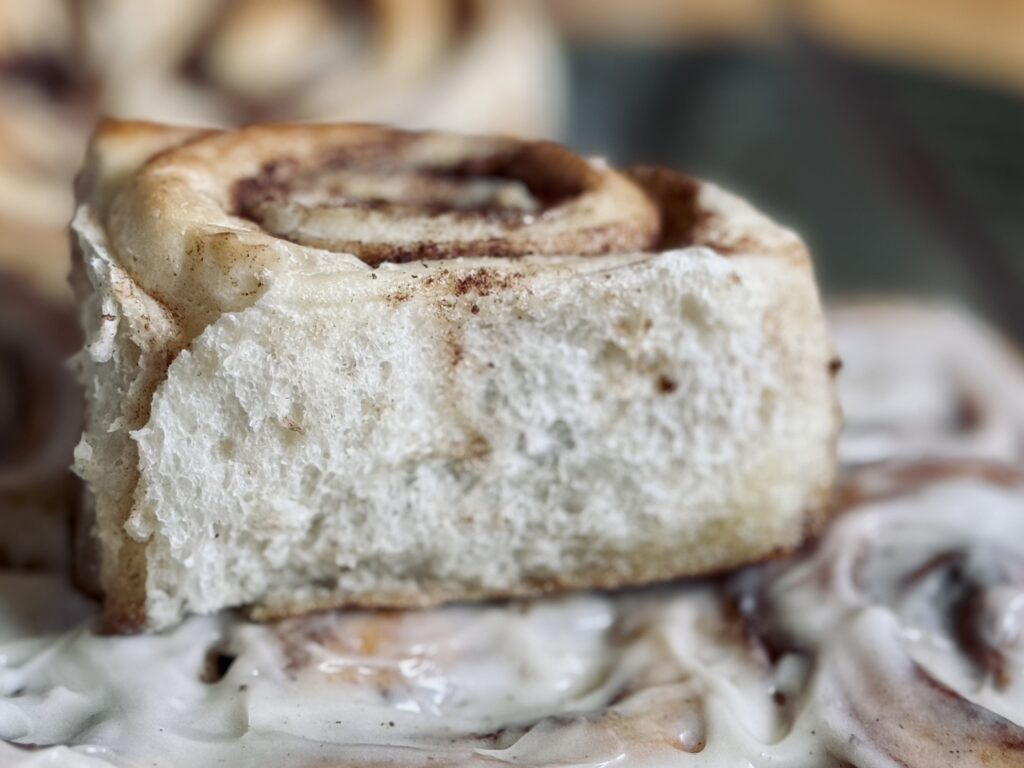
The “Why” Behind The Starter Build
Why Build A Starter (Levain) For This Recipe?
A “sour” flavor is not generally preferred for sweet breads. By building a levain, we can use a formula that helps to reduce overall sourness in the starter and in the bread. To do this, it is important to understand the starter, which consists of yeast and bacteria, and how the formula works to reduce sourness.
Sourness comes when bacteria are overpopulating in your sourdough starter, meaning they are out of balance with the yeast. This happens naturally, as bacteria reproduce faster than yeast do, especially in ideal climates. To limit sourness, it is important to favor the yeast in starter care. In this levain formula, I do just this in order to limit acidity and reduce overall sour flavor.
Stiff Starter
By giving the yeast more food (this means they can continue to eat, multiply, and produce CO2) and reducing the amount of water (bacteria favor wet climates), we can effectively reduce the amount of acidity in our starter at the same percentage of rise as a starter made with equal amounts of flour and water.
Sugar
This is one of the most important components of this levain – do not skip it! Sugar is a powerful tool. Added in low amounts, it feeds the yeast and speeds up fermentation. Added in high amounts, it dehydrates yeast cells and potentially stops fermentation altogether. Added in just the right amount, the yeast still thrive, but the bacteria suffer. 10-15% sugar in a recipe or levain creates something called “osmotic stress.” This stress to the bacteria limits their ability to reproduce, which limits acid buildup, thereby limiting overall sourness coming from the starter.
Temperature
In order to favor the yeast, I aim to keep this levain between 70-75 F (21-24 C) and use it when it has approximately doubled in size. Yeast produce most abundantly in these temperatures, while the bacteria in your starter (there are two types – lactic and acetic) favor temperatures both higher and lower than this. This specific temperature helps provide balance to the starter, which translates to how efficiently the starter ferments the bread and how mild the overall sour flavor is.
Optional Kneading
Have you ever heard of developing gluten in your starter? While it is not essential, kneading this starter for just a few minutes will help trap air, introducing oxygen and stimulating yeast growth. It also provides structure (by creating a slightly more elastic gluten network), which helps the levain rise and maintain peak more efficiently.
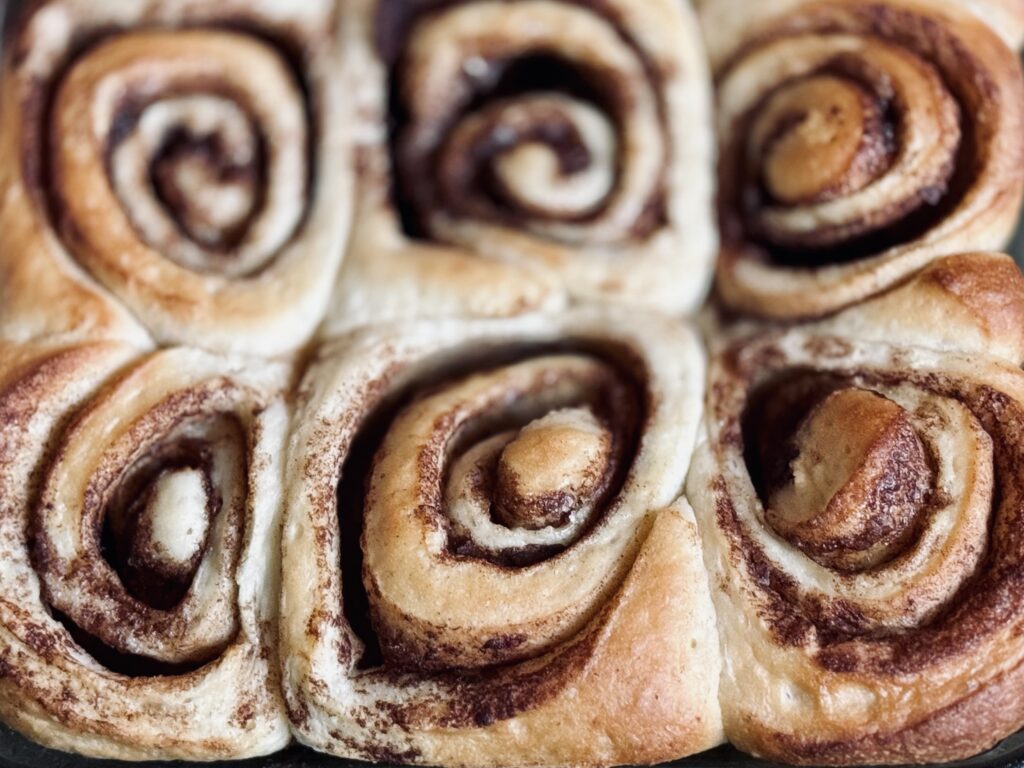
The “Why” Behind The Dough and Process
Milk Mixture
This is a technique that stems from the beginning of my bread journey, when I first started making bread doughs using commercial yeast. I have kept this technique for a long time. Recently, though, I have started to change this technique, moving away from heating my milk, butter, and sugar on the stovetop. This is because a well-kneaded enriched dough gains extra heat through friction during mixing; therefore, heating the ingredients is not necessary (and could even bring too much warmth to the dough, depending on your mixer). Despite this, let me tell you my previous reasoning as to why I created a “milk mixture” in this recipe:
By heating the liquid in the recipe with the sugar and the butter, we are able to simultaneously: a) create warmth that gets the yeast moving quicker, b) fully dissolve the sugar, and c) warm the butter without having to remember to soften a stick beforehand. There is not enough butter in this recipe to create greasy dough, as is the case with brioche, so melting (or, partially melting) it is definitely okay.
Let’s talk about the specific ingredients more in-depth:
Milk
Milk is a tightening agent in bread, meaning it makes the gluten network stiffer and stronger, often increasing the time the dough ferments. This is because it takes twice the air to blow up a stiff balloon (our gluten network). However, it also adds a really good flavor and texture to sweet breads. It makes the bread denser, softer, and creamier. It also helps the bread darken in the oven. For these reasons, I love to use milk in my sweet recipes.
Sugar
This recipe contains approximately 17% sugar (speaking for the dough only). This is slightly more than just the 10-15% of sugar that is sometimes added to bread to create osmotic stress, meaning I did have to increase the percentage of starter to help this recipe ferment more efficiently. It also means the sugar does work to sweeten the dough (just a bit), while also reducing overall sourness.
Butter
Butter is a tenderizer; it makes the dough fragile and soft. The amount of butter here is about 16% of the total weight of the flour, small enough to not interfere with the gluten network (too much), but large enough to help keep the bread soft during baking.
Bread Flour
Bread flour increases the strength (elasticity) of the gluten network, which is helpful for enriched doughs containing butter and sugar (ingredients that can interfere with gluten). Bread flour also helps the dough come together more efficiently when kneading, reducing the total amount of necessary mixing time. While I used to make this recipe with a blend of all-purpose flour and bread flour, I now use bread flour only, just for the incredible way it holds the dough together. I use King Arthur Bread Flour, protein content about 12.7%, in any recipe that calls for bread flour (unless otherwise noted).
Salt
Salt helps bring out flavor (without salt, bread would taste almost like nothing), but also has notable effects on the dough. Salt is a tightening agent, meaning it, in addition to milk, helps create a more elastic (strong) dough. It does slow fermentation, as well as gluten development, but these are things we must account for in the recipe because we cannot have a recipe without salt. It is important to use just the right amount, enough to bring out the flavor, but not so much that the loaf cannot ferment or come together. I use the standard – 2% salt – in all my recipes, unless otherwise noted.
Mixing
Because butter and sugar can interfere with gluten’s natural ability to come together over time, it is preferable to knead this dough to complete development up front. That’s why I choose to use a stand mixer – because the process for this can be kind of enduring by hand (though it is possible). Using a stand mixer ensures a perfectly and effectively built dough with minimum effort on the baker’s part. Watch this video for all the ways to develop gluten in your bread.
I want to be more specific in this updated post about how to develop the dough properly in the stand mixer than I was when I originally published this recipe. This way, you can be successful mixing this dough using any stand mixer, or even by hand.
The ultimate goal: to knead this dough to a clear windowpane. When you pull up on a section of dough, it should not tear. You should be able to stretch the dough to a point where you can see through it before it breaks. The dough will show other signs of being ready, too, such as clinging to itself or forming a ball around the dough hook. If you have a KitchenAid or similar mixer, the stand mixer may start to “jump” when the dough builds sufficient strength.
The first step to achieving this is to mix the dough on a low to medium-low speed until the ingredients are fully combined and the mixture forms one cohesive mass of dough. This step simply brings our dough together and hydrates the proteins in the flour before the speed is increased and the focus shifts from combining ingredients to forming gluten. Too fast a speed during this initial mix can start to organize gluten that is barely created, negatively impacting the development of the dough.
Next, we increase the speed and knead the dough forms a windowpane. The speed you choose is up to you and what your mixer (and dough) can handle. The basic guidelines are this:
- A lower speed will take longer, while a higher speed will knead the dough much faster.
- A lower speed will keep the dough elastic (strong, not stretchy), while a higher speed will create extensibility (stretchiness).
- The dough temperature should not exceed 78 F (26 C).
- Use the guidelines from your mixer to determine what it is able to handle.
Bulk Fermentation
Letting the dough rise as much as possible, but not too much, contributes to the airiest of loaves. In an attempt to favor the yeast and reduce sourness, I recommend keeping the dough temperature between 70-75 F (21-24 C). Watch the dough and ferment until it doubles in size (at least; eight to twelve hours). If you developed the dough well in the stand mixer, you can let it triple in size before shaping. Though I favor an overnight method for this dough, use your knowledge of your environment to bulk ferment this dough appropriately.
The Filling
I chose to fill these rolls by smoothing the butter, sugar, and cinnamon separately over the rolled out dough, rather than making a paste beforehand. The reason for this may surprise you: combining the ingredients before spreading them over the dough allows the cinnamon rolls to be rolled tighter, which doesn’t work well if the cinnamon rolls are baked in a 9X13 baking dish. Cinnamon rolls that are rolled too tightly with no room to expand outward will actually end up bursting out the middle. Adding the ingredients separately helps keep the baker from rolling the rolls too tight, and it also takes away the extra step of combining the filling beforehand.
Softened Butter
By using softened butter, we can effectively spread the butter (unlike cold butter) all over the dough and shape the cinnamon rolls without fear of the butter pooling on the bottom of the pan (unlike melted butter) during the final proof.
Shaping
Easy – roll the dough out, add the filling, roll it up, then slice and add to the baking pan. I don’t use any fancy tricks to cut my cinnamon rolls, just a serrated knife. However, you can do as you wish.
Baking
These loaves are simple to bake, as they do not require the preparation of steam or a wash. Milk, sugar, and a good fermentation will cause perfect browning in the oven. I bake my milk breads (like this one) at a lower temperature than my water-based breads: 350 F (175 C). This “low and slow” temperature prevents over-browning and over-baking. A final internal temperature of 185 F (85 C) cooks these rolls until they are just done, leaving you with the softest and fluffiest end result.
Cream Cheese Frosting
The final touch and perfect garnish. Though you don’t have to have it, I wouldn’t skip it.
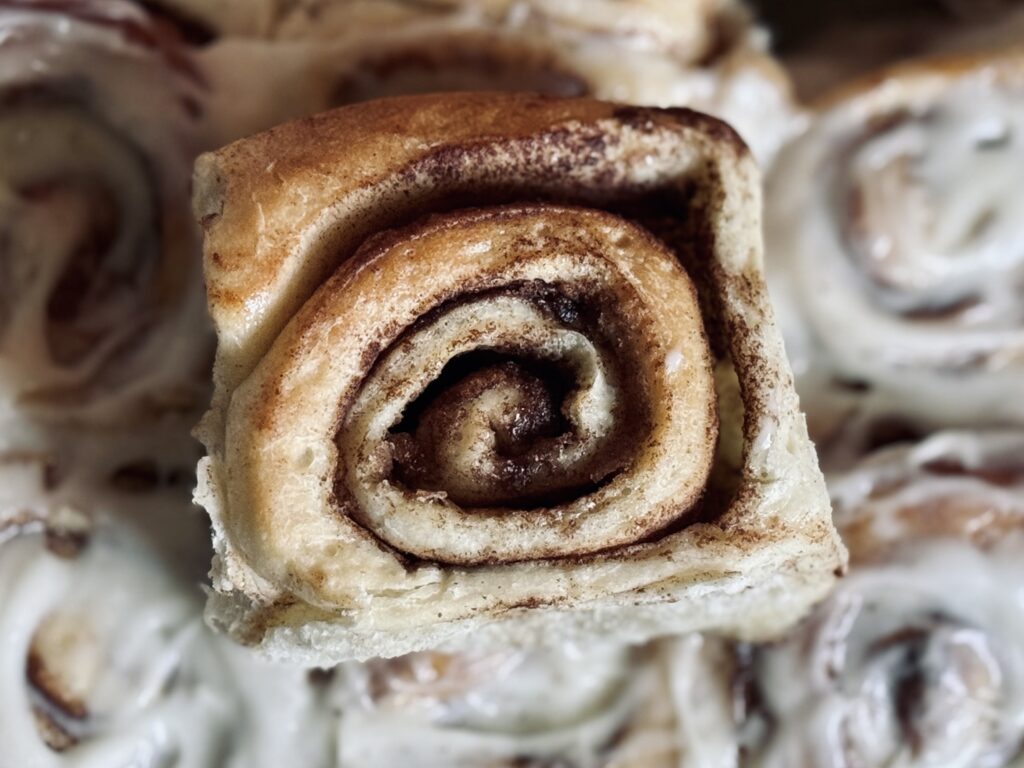
Suggested Timelines
Overnight Timeline
DAY 1
9:00 a.m.
- Make the sweet stiff starter.
9:00 p.m.
- Mix and knead the dough.
9:30 p.m.
- Begin bulk fermentation.
DAY 2
9:00 a.m.
- Make the filling.
- Roll out the dough, fill, and shape.
12:00 p.m.
- Bake the cinnamon rolls.
- Make the frosting.
- Enjoy!
Refrigeration Timeline
DAY 1
9:00 p.m.
- Make the sweet stiff starter.
DAY 2
9:00 a.m.
- Mix and knead the dough.
9:30 a.m.
- Begin bulk fermentation.
9:30 p.m.
- Transfer dough to the refrigerator overnight.
DAY 3
8:00 a.m.
- Make the filling.
- Roll out the dough, fill, and shape.
2:00 p.m.
- Bake the cinnamon rolls.
- Make the frosting.
- Enjoy!
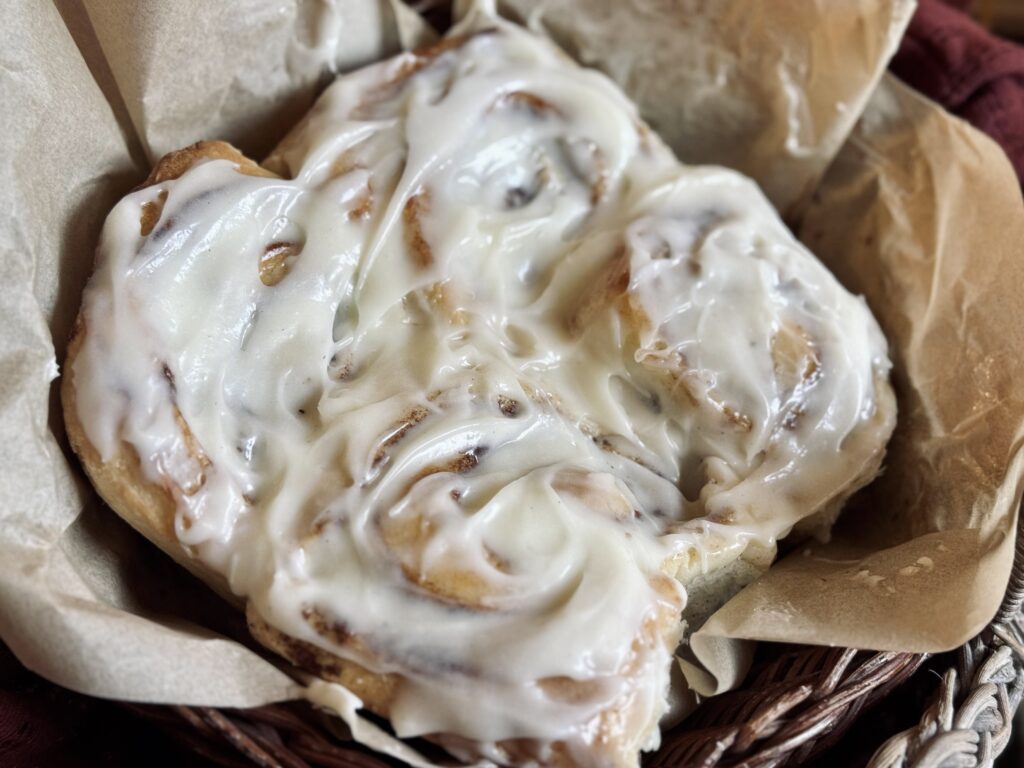
📌 Quick Tip: Read the recipe in its entirety before you start cooking. This will help you understand the ingredients, steps, and timing involved, and allow you to prepare any necessary equipment or ingredients beforehand.
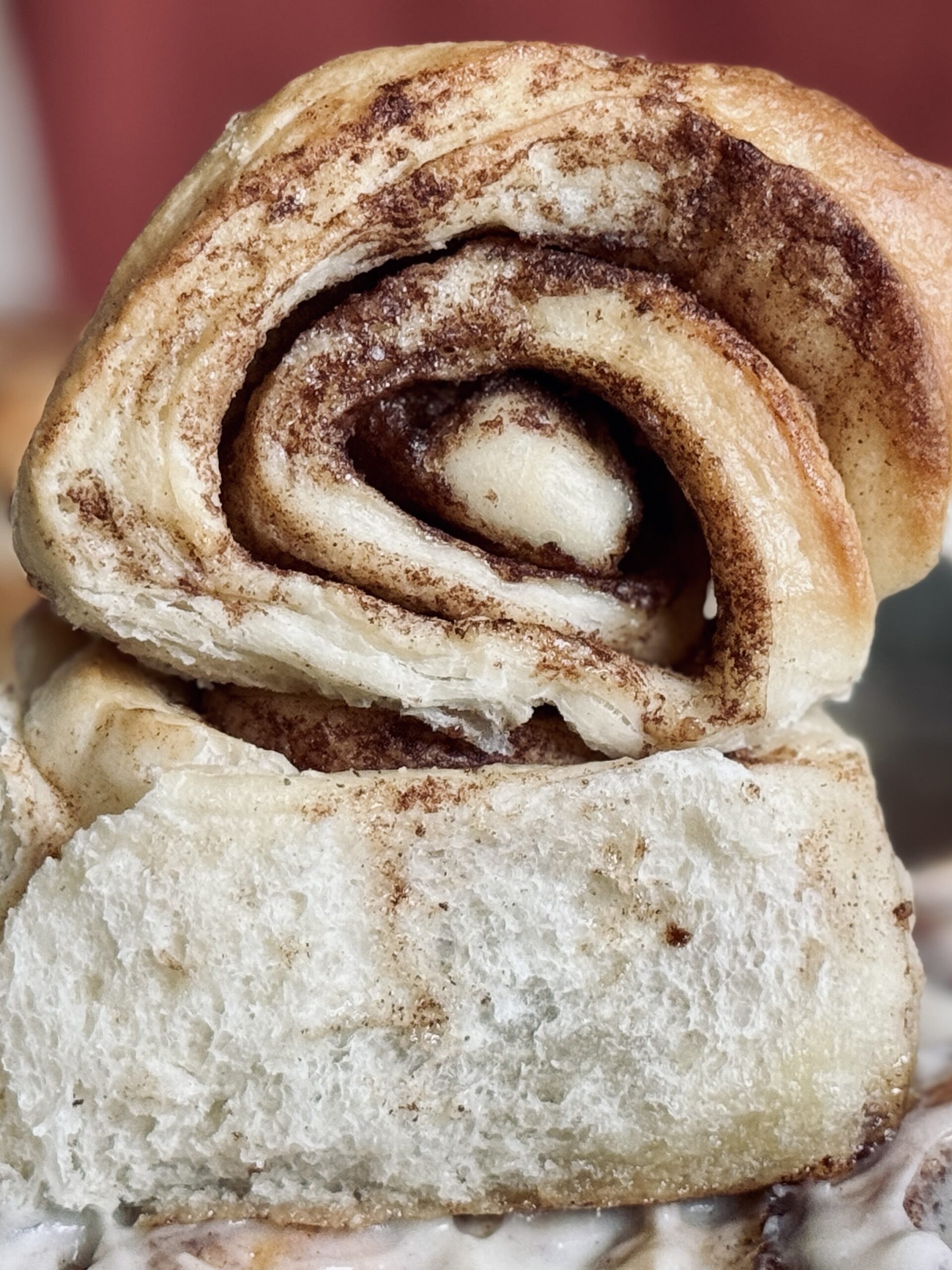
Cinnamon Rolls
Ingredients
Sweet Stiff Starter
Milk Mixture
Main Dough
Filling
Cream Cheese Frosting
Instructions
-
Make the sweet stiff starter.
Mix together all ingredients for the sweet stiff starter 8-12 hours before beginning this recipe. Optionally, knead for 3-5 minutes to develop some gluten to help the starter rise. Cover and rest at room temperature.
-
Heat the milk mixture.
When you’re ready to mix the dough, begin with the milk mixture. In a medium saucepan, mix the milk, sugar, and butter. Heat over medium heat until the mixture temps approximately 95 F (35 C). Stir to fully dissolve the sugar and continue melting the butter. Set aside.
-
Begin the main dough.
In the bowl of a stand mixer, whisk together the flours and salt. Add the milk mixture and roughly mix, then add the sweet stiff starter.
-
Knead the dough.
- KitchenAid: Transfer to a stand mixer fitted with a dough hook attachment and knead on a medium speed (speed 4-6) 10-15 minutes, until the dough pulls away from (and “slaps”) the sides of the bowl and forms a ball around the dough hook. I knead on speed 6 for eight minutes, then slow to speed 4 for five more minutes.
- Ankarsrum: Using the dough hook and scraper attachment, knead on a medium speed (speed 4-5) 15-18 minutes, until the dough becomes strong enough to push the scraper away from the side of the bowl, begins to climb up the dough hook, and passes a windowpane test.
-
Bulk ferment the dough.
Transfer the dough to a proofing container and let the dough rise until it has at least doubled in size. This will take 8-12 hours at 70 F (21 C), so I love to do this as an overnight dough.
Now is a good time to take out the butter (for the filling) and cream cheese (for the frosting) to soften. -
After the dough has risen, butter a 9X13 baking dish with 2 tbsp softened butter.
-
Shape the dough.
Flour your working surface. Roll out dough into a ½ inch thick rectangle. Top with the softened butter, brown sugar, and cinnamon. Roll up the dough, trying your best to keep the edges even and to avoid rolling too tightly.
A dough rolled too tightly will explode out the top, since it does not have room to expand. -
Cut the log into 12 even pieces. I find a serrated knife works just fine for this, though you can use the floss trick if you prefer. Transfer the rolls to a buttered, 9X13 inch casserole dish.
-
Let the dough rest once more.
Let the rolls rise until puffy and touching one another in the pan, 2-4 more hours.
-
Preheat your oven to 350 F (175 C).
-
Bake the rolls.
Bake for 30-40 minutes, until the internal temperature reaches 185 F (85 C).
-
Make the frosting.
Combine all ingredients for the frosting in a food processor and process 30-60 seconds until smooth. Spread all over the hot cinnamon rolls and enjoy!
Servings 12
- Amount Per Serving
- Calories 609.72kcal
- % Daily Value *
- Total Fat 26.99g42%
- Saturated Fat 16.3g82%
- Trans Fat 0.65g
- Cholesterol 70.4mg24%
- Sodium 422.46mg18%
- Potassium 168.6mg5%
- Total Carbohydrate 84.04g29%
- Dietary Fiber 3g12%
- Sugars 38.54g
- Protein 9.34g19%
- Vitamin A 229.24 IU
- Vitamin C 0.11 mg
- Calcium 115.42 mg
- Iron 3.02 mg
- Vitamin D 0.55 IU
- Vitamin E 1.01 IU
- Vitamin K 3.27 mcg
- Thiamin 0.5 mg
- Riboflavin 0.41 mg
- Niacin 4.44 mg
- Vitamin B6 0.05 mg
- Folate 24.4 mcg
- Vitamin B12 0.25 mcg
- Phosphorus 114.24 mg
- Magnesium 23.78 mg
- Zinc 0.79 mg
* Nutrition values are auto-calculated and should be used as an approximation only. In addition, the values may not accurately represent the serving divisions of the recipe, instead representing the nutrition of the recipe as a whole.
Notes
- Storage: I like to store these in the baking dish I made them in, covered, on the counter for three to five days. Microwave 20-30 seconds per roll or reheat the baking dish in a low oven (250 F) for 15-25 minutes, until warmed through.


